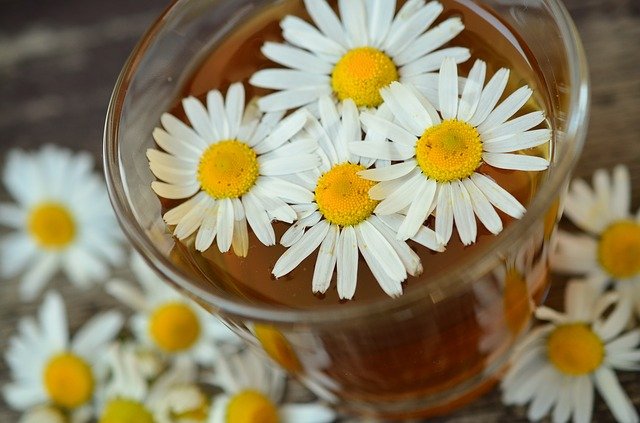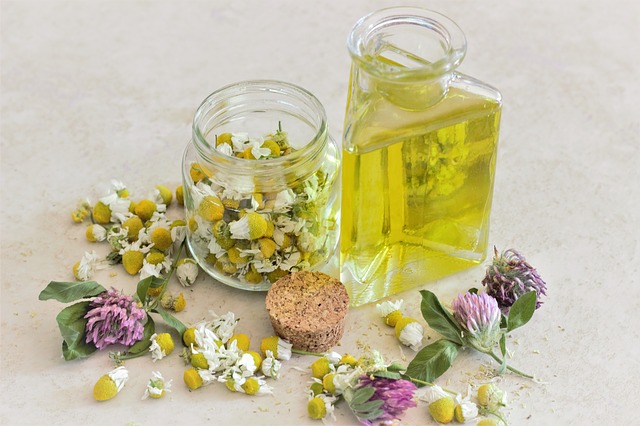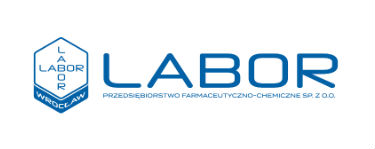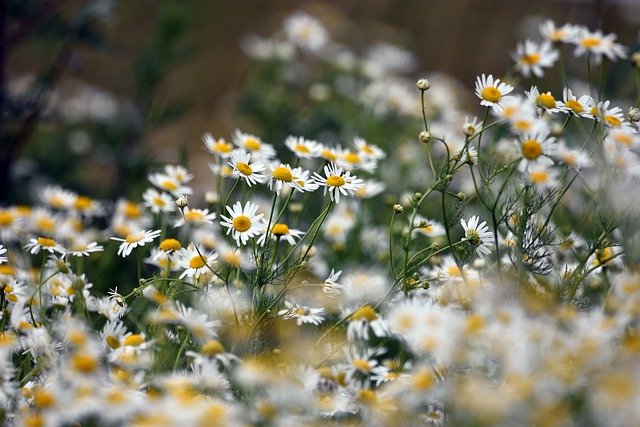Common chamomile (Matricaria chamomilla L.) – is a species of plant from the Asteraceae family. In the wild, it occurs in almost all of Europe and in the Urals, the Caucasus, Iran, Afghanistan, Asia Minor and India. It was also transferred to North America and Australia.
In Poland, it is commonly found in the wild. It is also very often grown as a medicinal or ornamental plant.
Probably everyone knows the appearance of chamomile. It is an annual plant with a stem height of about 60 cm. Flowers are growing at the ends of the branches. White, long petals located on the edge of the inflorescence are female flowers, while the yellow ones inside are bisexual.
The whole plant gives off a strong, pleasant fragrance.
The herbal raw material is chamomile baskets – Anthodium chamomillae.

Composition
Chamomile baskets contain essential oil that has the greatest influence on their pharmacological activity. Its most important ingredient is chamazulene. In addition, chamomile baskets contain flavonoid compounds, coumarin derivatives, choline and many others.
Action
The action is multidirectional, due to the highly anti-inflammatory effect of the oil on mucous membranes. It occurs both after oral administration and after topical application.
In addition, it also relaxes the smooth muscles of the digestive tract, blood vessels and, to a lesser extent, the biliary and urinary tract.
It also has a bacteriostatic effect and stimulates the secretion of gastric juice.

Application
We use chamomile infusion orally in inflammation of the gastrointestinal tract and also, as an auxiliary, in anorexia, in peptic ulcer disease, flatulence, abdominal pain and heartburn caused by excessive intestinal fermentation.
In children and the elderly, chamomile infusion is used to prevent gases from going away (chamomile tea for babies!).
Externally, it is used for rinsing the mouth and throat, for washing and compresses on the eyelids, for bathing (especially for infants), for washing and compressing the skin, especially after damage, thermal and sun burns, and as an anti-inflammatory and bacteriostatic agent.
As you can see, it is a very valuable raw material with versatile medicinal use.
As a curiosity, I would like to add that in the breakfast buffets of some hotels in the Mediterranean region it is easier to find chamomile tea (or mint) than regular tea. Fortunately, good espresso coffee is a must!
AUTHOR: Dr n. farm. Andrzej Tarasiuk




